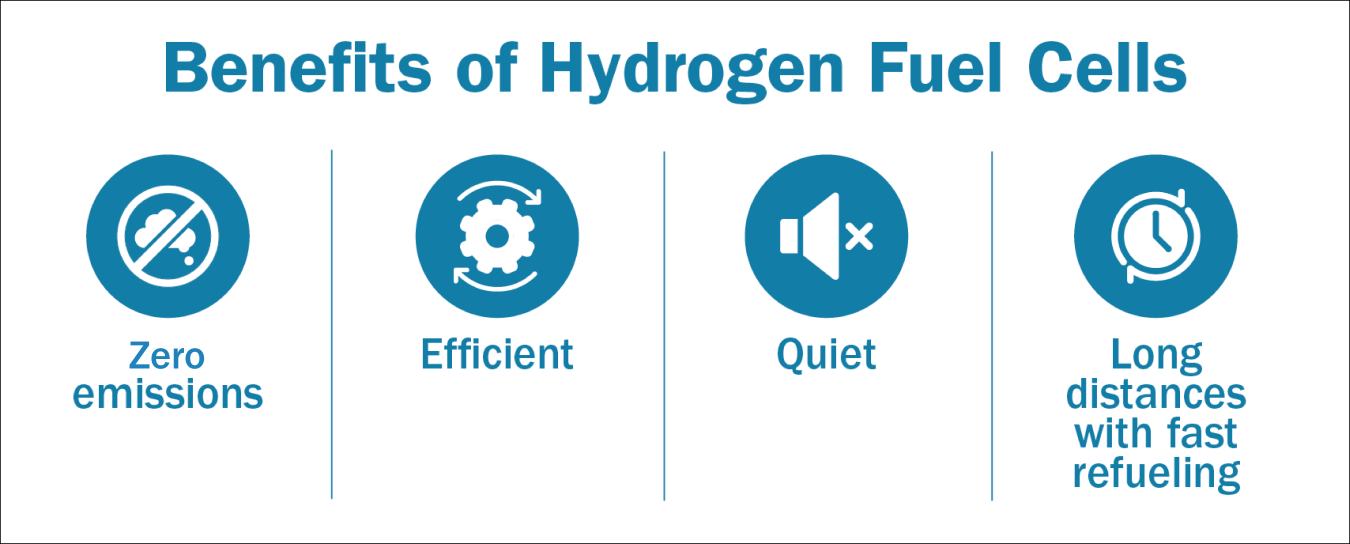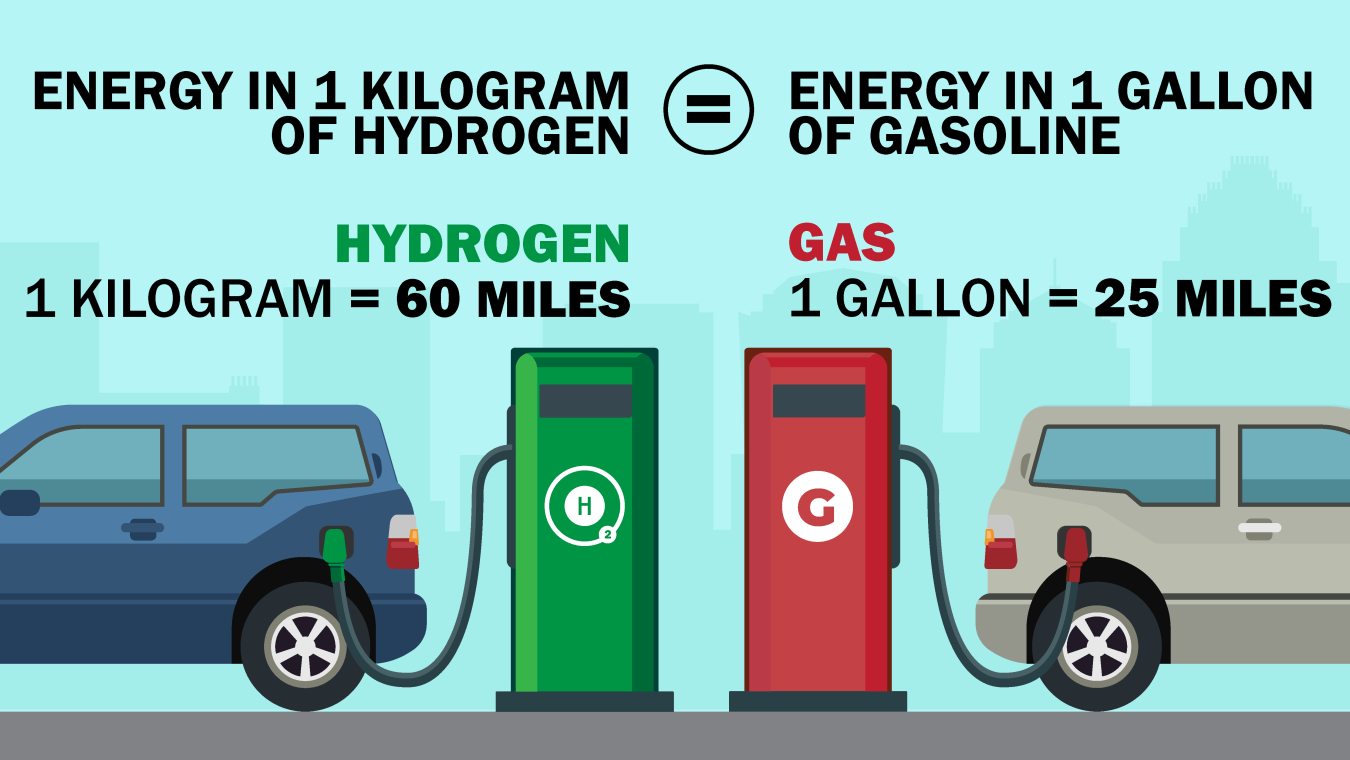Hydrogen can store and deliver energy for many uses across U.S. economic sectors, including transportation.
February 25, 2022Hydrogen can store and deliver energy for many uses across U.S. economic sectors, including transportation. It has the potential to significantly reduce air pollution in the form of greenhouse gases from trucks, buses, planes, and ships. Greenhouse gases trap heat and contribute to climate change, and the transportation sector is responsible for 29% of these emissions.
Hydrogen is an energy carrier and fuel that, when fed into a fuel cell, can power vehicles and trucks without releasing harmful emissions. Hydrogen and fuel cells can reduce emissions in heavy-duty vehicles, which make up 5% of vehicles on U.S. roads, are responsible for more than 20% of transportation emissions, and are the largest contributor to mobile nitrogen-oxide emissions in the United States.
Electric Vehicles and Hydrogen Fuel Cells
Some electric vehicles contain a battery, and some contain a hydrogen fuel cell and a battery. All electric vehicles have electric motors.
In battery-only electric vehicles, electricity charges the battery directly. In hydrogen fuel cell–powered vehicles, hydrogen is stored as a fuel in a tank. The hydrogen stores energy, flows into a fuel cell, reacts with oxygen from the air, and creates electricity that powers the electric motor.
Hydrogen Fuel Advantages

Tailpipes on hydrogen fuel cell–powered vehicles produce only heat and clean water, no pollutants.
Traditional combustion engines can make a vehicle heavy and less efficient. Instead of a combustion engine, hydrogen-powered vehicles have hydrogen fuel cells, which convert energy to electricity more efficiently. Fuel cells convert a fuel’s chemical energy to electrical energy and can be two to three times more efficient than internal combustion engines.
Fuel cells make the vehicle more efficient and quieter, because there are fewer vibrations from moving parts. Hydrogen fuel allows vehicles to travel longer distances with less refueling, so it is ideal for fueling heavy-duty tractor trailers and public transit buses, which travel hundreds of miles at a time.
Zero-emissions vehicles, like hydrogen fuel cell–powered public buses and drayage trucks, can idle without contributing to air pollution. Drivers can keep their vehicles on while stopped to provide cooling or heating for comfort.
Filling Up with Hydrogen

Hydrogen is sold per kilogram. The energy in one kilogram of hydrogen is equal to one gallon of gasoline. Hydrogen can fill a vehicle’s tank in minutes, like gasoline at the pump. Today, about 50 U.S. fuel stations provide hydrogen to support the more than 12,000 hydrogen fuel cell–powered vehicles and nearly 70 buses on the road. The cost of hydrogen hovers around $13 per kilogram (kg), but as technologies advance and costs decrease, hydrogen fuel will become more accessible and affordable.
Hydrogen fuel cell–powered vehicles travel longer distances using less energy. One kg of hydrogen contains about the same energy as a gallon of gasoline. Today a fuel-cell electric vehicle with 1 kg of hydrogen can drive approximately 60 miles, compared to conventional vehicles, which get about 25 miles on a gallon of gasoline. With continued technology improvement, the U.S. Department of Energy (DOE) is working to increase that fuel efficiency up to nearly 100 miles on 1 kg of hydrogen. DOE’s Hydrogen Shot aims to reduce the cost of clean hydrogen to $1/kg within one decade to make hydrogen more accessible and affordable.
Visit the DOE Hydrogen and Fuel Technologies Office’s education page to learn more about hydrogen and fuel cells, including their important role in a clean and equitable energy future. Sign up to receive the office’s newsletter and stay in the loop with the latest developments in hydrogen and fuel cells.

